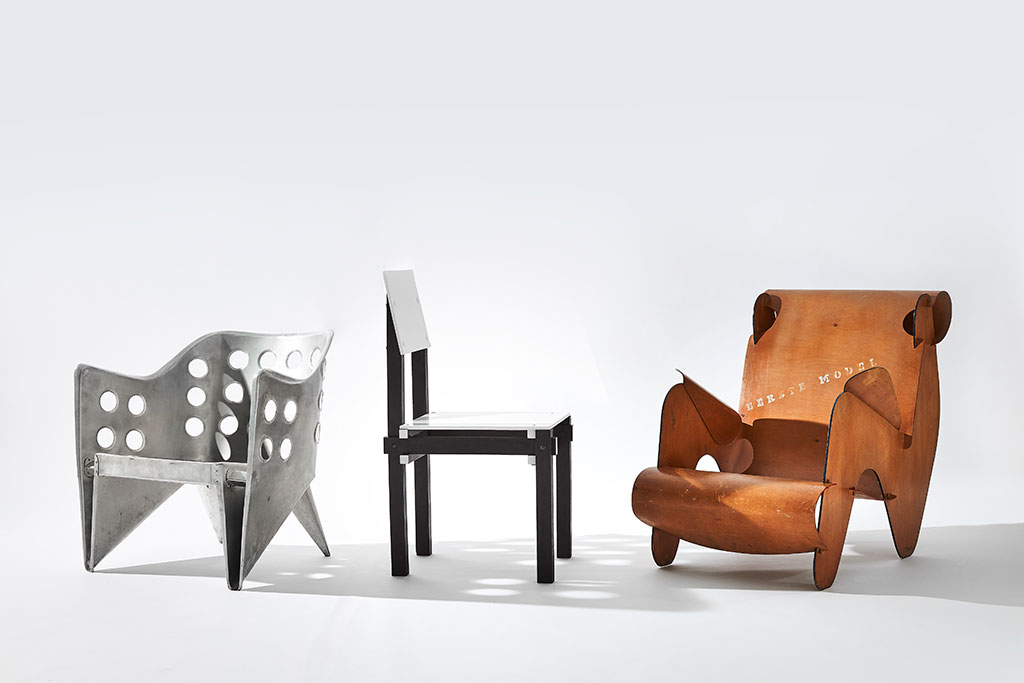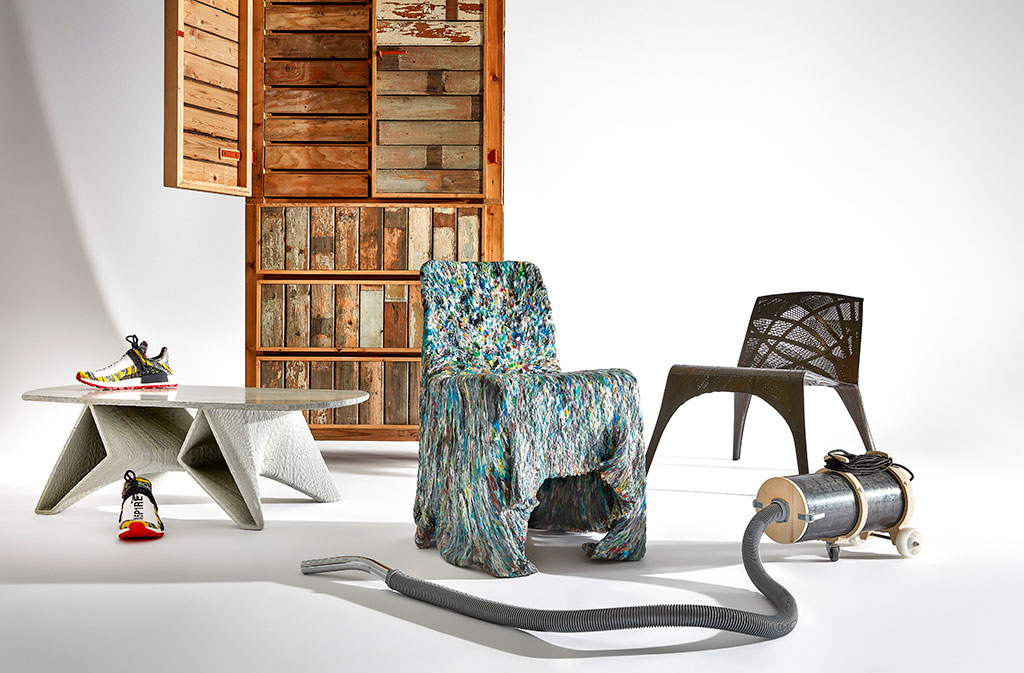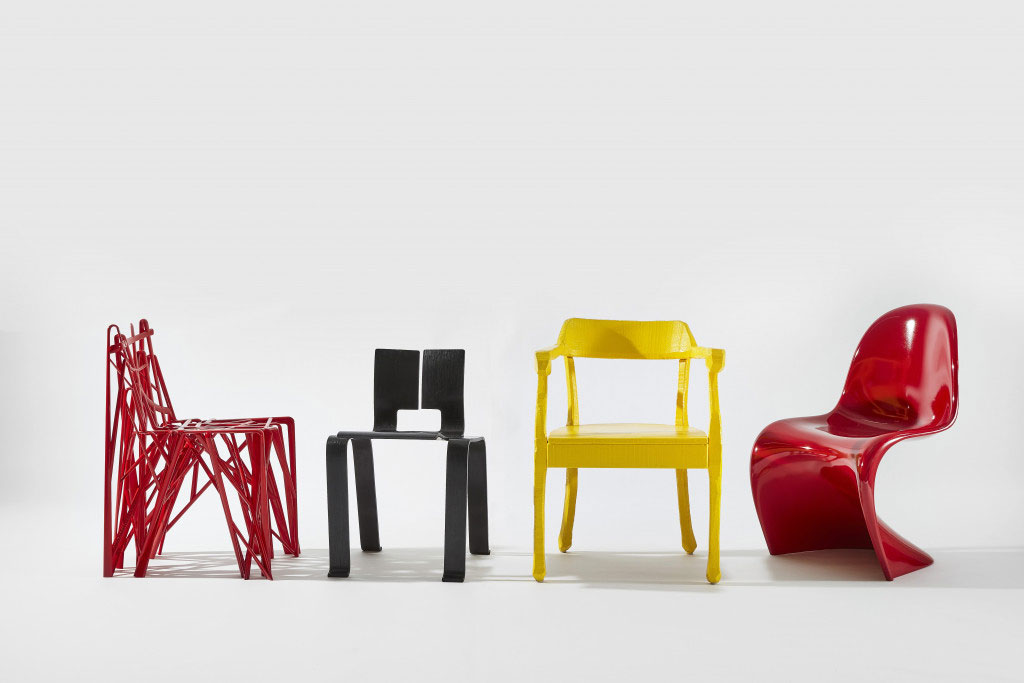DESIGN:From Thonet to Dutch Design
 The exhibition “From Thonet to Dutch Design” features over 300 objects that over the past 125 years were landmarks of design innovation and excellence. Visitors are invited to explore design history, from a Thonet bench, one of the oldest pieces in the collection of Stedelijk, to acclaimed designs by the Wiener Werkstätte, the Amsterdam School, Scandinavian design, the advent of plastics in the ‘60s, the colorful Italian Memphis designs of the ‘80s, and the successful school of Dutch design, which emerged in the ‘90s.
The exhibition “From Thonet to Dutch Design” features over 300 objects that over the past 125 years were landmarks of design innovation and excellence. Visitors are invited to explore design history, from a Thonet bench, one of the oldest pieces in the collection of Stedelijk, to acclaimed designs by the Wiener Werkstätte, the Amsterdam School, Scandinavian design, the advent of plastics in the ‘60s, the colorful Italian Memphis designs of the ‘80s, and the successful school of Dutch design, which emerged in the ‘90s.
By Efi Michalarou
Photo: Stedelijk Museum Archive
The exhibition “From Thonet to ‘Dutch Design’ 125 Years Of Living At The Stedelijk” spotlights work by renowned and ground-breaking designers such as Michael Thonet, Gerrit Rietveld, Charlotte Perriand, Verner Panton, Ettore Sottsass, Hella Jongerius, Marcel Wanders, and Patrick Jouin. Among the items of furniture, the backbone of the collection, there are relatively few pieces by women designers. Nearly 20% of the objects in the exhibit were created by women (including collectives that contain at least one woman), such as the amazing graphic work by the Dutch designer Bertha Bake, a chair by Charlotte Perriand from the ‘50s, a hobbyhorse by Gloria Caranica and a bench and matching table by the Danish designer Nanna Ditzel. The Stedelijk staged its first exhibition devoted to the design of children’s toys and furniture in 1965 “Kinderspel” (Child’s Play). Since then, children’s design has been a key part of the design collection. The exhibit includes a large gallery dedicated to design for children, with work by Charles & Ray Eames, Victor Vasarely, Enzo Mari and Ineke Hans. This space also features a special design: the Stedelijk and HMC, Amsterdam’s craft and design college, jointly launched a competition inviting students to design a piece of furniture for children aged between 2 and 6. 25 hopefuls submitted designs, and the winner was student Rosa Kosto; her De Crux design consists of stools that children can sit on and move in a grid to make their own configuration. The exhibition ends with contemporary themes such as sustainability, inclusion and the democratization of design. The “Scrapwood Cupboard” by Piet Hein Eek from 1990, an early example of sustainable material use, is now a widely imitated international design classic. Eek pioneers the more sustainable use of raw materials. Jesse Howard’s open design is very democratic: his downloadable (digital) files are blueprints you can follow to make your own household appliances using materials from the hardware store. The gallery devoted to Dutch design also looks at how the corona crisis has impacted the world of design in the Netherlands. As the curator of the exhibition says: “We’d already planned on looking at the current position of Dutch designers in the creative industry. Then came the corona crisis. Together with BNO, the professional association for Dutch designers, we conducted a survey on the impact of corona and presented the initial results. And of course, partly digitally, we’re also displaying designs that respond to this crisis”. The research of restorer Jurjen Creman and art historian Rob Driessen into the Aluminium Chair by Gerrit Rietveld will be published online during the exhibition.
Info: Curator: Ingeborg de Roode, Stedelijk Museum, Museumplein 10, Amsterdam, Duration: 25/7/20-21/3/21, Days & Hours: Daily 10:00-18:00, www.stedelijk.nl

Collection Stedelijk Museum Amsterdam. Photo: Peggy Janssen, styling: Heidi Willems – PURE styling

Collection Stedelijk Museum Amsterdam. Photo: Peggy Janssen, styling: Heidi Willems – PURE styling

Collection Stedelijk Museum Amsterdam. Photo: Peggy Janssen, styling: Heidi Willems – PURE styling

Collection Stedelijk Museum Amsterdam. Photo: Peggy Janssen, styling: Heidi Willems – PURE styling
